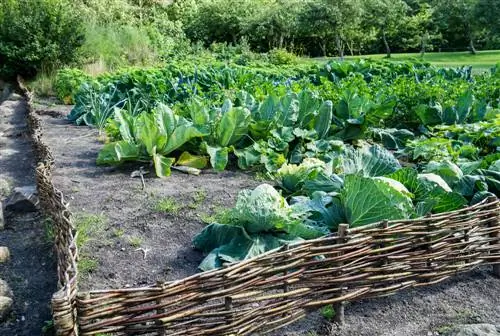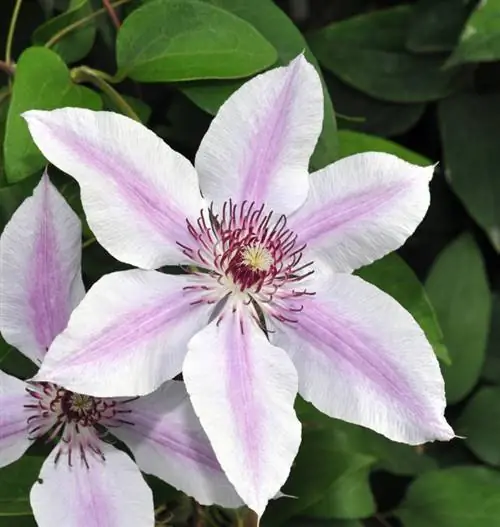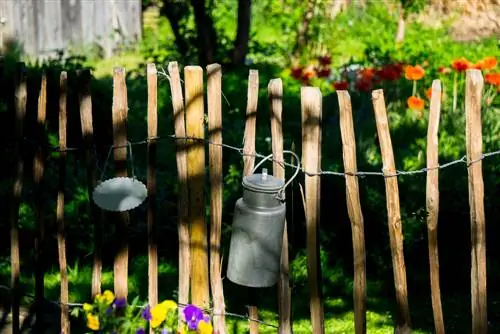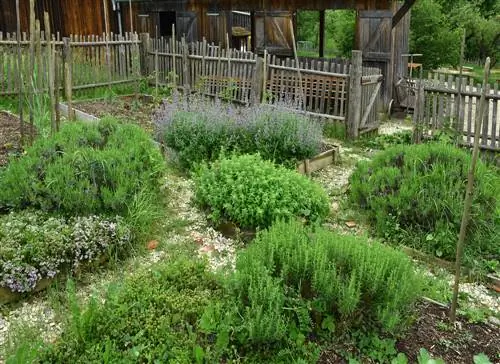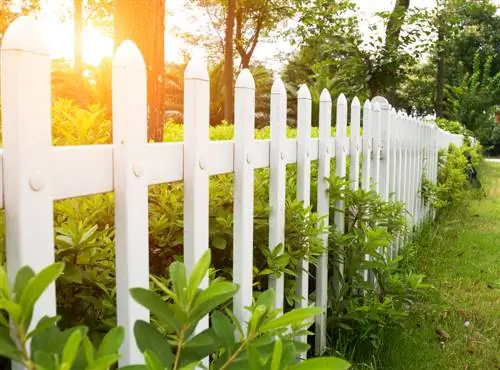- Author admin [email protected].
- Public 2023-12-16 16:46.
- Last modified 2025-01-23 11:21.
Fences separate your own property from the outside world. But they also serve as a decorative element, which is why the possible variations are almost endless. However, the border should blend harmoniously into the surroundings in terms of type, color, material and height.
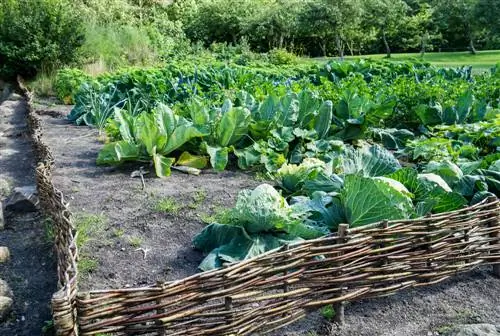
How to effectively fence a vegetable garden?
There are various options for fencing in the vegetable garden: metal fences such as wire mesh or wire mesh fences, natural materials such as wood, wicker or bamboo and living hedges as natural, effective boundaries. Each material has different protection and design options.
Fences are more than just property boundaries
A fence is more than just marking your own territory. It also protects against prying eyes, two- and four-legged intruders, dust, noise and wind. Depending on the region and taste, there are numerous variants of fences:
- simple, rustic wooden fences, sometimes painted (white)
- Metal fences, sometimes set on a low wall
- hung between posts dominate fence fields
- Bars and lace are often artfully decorated as decorative elements
By the way: If you build a fence, you shouldn't forget the matching gate. There are many options here too, for example an arch surrounded by climbing roses.
What options are there for fencing the vegetable garden?
Fences can be made of very different materials: If you like it natural and rustic, you can choose wood. Of course, metal fences are much more durable, whereas living hedges provide excellent protection not only from intruders, but also from prying eyes.
Metal fences
The range of metal fences ranges from simple chain link fences to artfully shaped wrought iron fences.
- Wire mesh fences are inexpensive and can be easily covered with plants
- Bar fences are available in different designs. They are also suitable as trellises.
Fences made from natural materials
Natural materials such as wood, wicker or bamboo also offer diverse and unusual design options:
- Picket or picket fences appear rustic (natural) or more elegant (painted white), depending on the design. The degree of transparency results from a more or less dense arrangement of the slats.
- In contrast to picket fences, plank fences are always low and only offer symbolic, but not real, protection.
- Scissor or lattice fences (e.g. the popular hunter's fence) are also easy-to-overcome obstacles and therefore serve primarily as fencing.
- Wave fences are made from thin wooden slats or wicker. They form a very good privacy screen and fit perfectly into natural gardens.
- Fences or dividers made of bamboo cane are used as boundaries in Asian-style gardens.
Tip
Instead of a metal or wooden fence, you can of course also opt for a living hedge. Many suitable trees form an excellent barrier as well as a no less great privacy screen - and also look beautiful.

